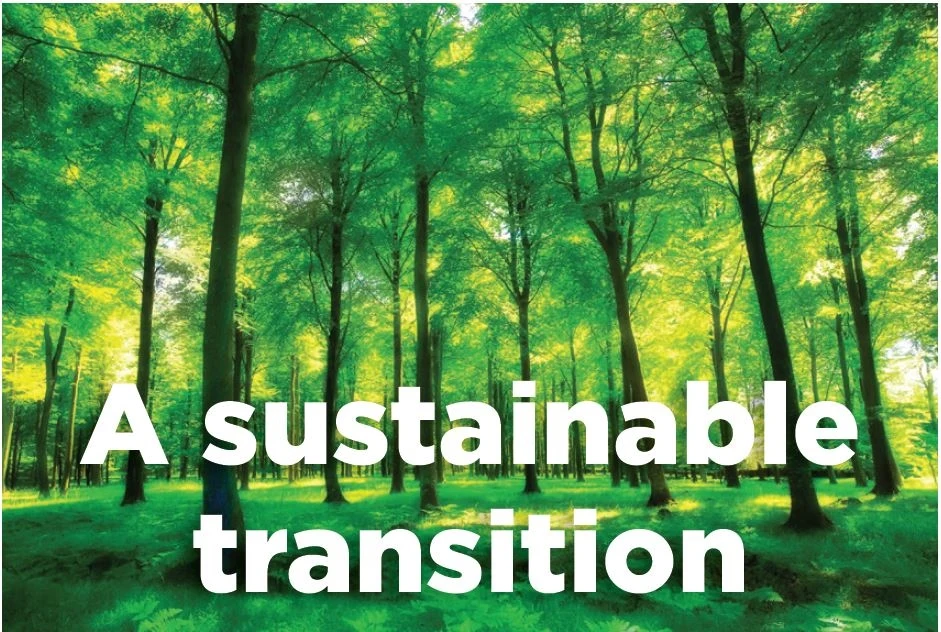
The fast-expanding universe of ESG funds requires familiarity with a new set of assets and evidence of transition managers’ own internal ESG practices. As asset owners, managers and investors seek out ESG mandates with unprecedented speed.. This article is part of the Transition Management Guide 2022.
A sustainable transition
The fast- expanding universe of ESG funds requires familiarity with a new set of assets and evidence of transition managers' own internal ESG practices.
As asset owners, managers and investors seek out ESG mandates with unprecedented speed, what they ask of transition managers is shifting.
“The trend is seismic, pension funds are under pressure from regulators and underlying beneficiaries, requiring that plans adhere to Paris accord [targets]. With this growing ESG tilt, we’re seeing a lot of custom benchmarks being created,” says Craig Blackbourn, EMEA head of transition management at Northern Trust.
The broader preoccupation with ESG may be short-lived, according to David Edgar of Inalytics. “There’s a battle for who defines and supplies the ESG benchmark data, but in three years ESG compliance will be a given and people will be talking about the next thing. For transition managers, the questions remain the same: what does the portfolio this fund will hold look like. Once the fund is approved, it’s just another transition.”
However, the ESG universe has distinctive features that managers must grasp and stay abreast of.
“It’s not just about de-risking, or changing a manager because they have either been out- or under-performing. Rather, ESG is a separate theme that clients are changing portfolios around. If you’re talking low-carbon, I need to know what level of retention a low-carbon index has as against the wider index. It’s got to become part of what we intuitively know and understand,” says Andy Gilbert, EMEA head of transition client strategy at BlackRock.
“ESG fund launches, as well as transitions into existing ESG strategies, tend to involve heavily concentrated portfolios, with significantly sized illiquid stocks, as well as in-vogue managers that feature time and again. All this means these transitions require very careful consideration to ensure we are employing an optimal trading strategy,” says Paul McGee, head of Macquarie Capital’s transition management and portfolio solutions group in London.
Conversations between transition managers and clients focus on the larger tracking error typical for ESG funds. They will likely contain a larger number of small cap names than an unconstrained global equities portfolio, meaning higher risk, a larger deviation of returns and different sector and country concentrations -all shifting the liquidity profile of a transition.
With ESG, mandates are typically more concentrated, just like with high conviction non-ESG managers. So, diversifying beta risk using futures is harder. “A lot of the risk is stock specific rather than market or currency risk,” says Chris Adolph, director of implementation services, EMEA, at Russell Investments.
A close eye
Transition managers may not be part of ESG portfolio selection, but increasingly clients are looking to their transition managers for ESG analytics, adding ESG lenses to portfolio analysis.
“By comparing their portfolios against key carbon metrics, carbon intensity levels and net-zero commitments, clients are equipped to understand their portfolio risks and opportunities from a carbon perspective and make tangible adjustments in their portfolios toward de-carbonisation,” says Mathilde Richardot of the portfolio transition solutions team at Goldman Sachs.
With demand for ESG funds growing from a range of participants, transition managers face specific operational challenges.
“ESG by its very nature is evolving. Clients are looking to evolve their investment management mandates to incorporate ESG, and this now includes UK local authorities and wealth management platforms. Some of those platforms will be operating pooled fund structures that could be domiciled in parts of Europe such Dublin or Luxembourg. They may or may not fall under UCITS guidelines and potentially would be covered by SFDR, including the taxonomy that comes out in January,” says Gilbert.
These may intensify when it comes to interim management.
“When it comes to interim management, as soon as you have a degree of discretion over portfolio construction then you’re in a different segment of ESG. You no longer rely on the target manager’s wish list and you must be attentive to that. The client needs to know if and how the interim manager is approaching ESG considerations – particularly, if SFDR is part of the client’s regulatory regime,” says Gilbert.
In addition to meeting these operational and regulatory requirements, transition managers may provide an extra layer of operational oversight to check ESG parameters hold between one manager and the next.Specifically, they can ensure that the target manager doesn’t buy something that is on a client’s exclusion list – or which takes the portfolio over allocation or concentration limits.
“The risk is greatest where target managers have a number of segregated mandates for different clients, all with different client-specific exclusion lists and allocation limits,” says Artour Samsonov, head of transition management and investment solutions at Citi in London.
Providing such services is complicated. A lack of unitary measurement frameworks for ESG means that the universe of ESG stocks is always changing: a manager who thinks he has a good grasp of it from a number of transitions might find something very different in the next one.
Blackbourn gives the example of a middle eastern client who changed the vendor it used to provide its ESG screening. “When the vendor changed, so did the screening ratings,” he says.
Adolph places the ESG shift within the wider trend of clients expanding the range of assets to which they are seeking access, with multi- asset and private portfolios – as well as other illiquid alternative products – take a growing share of the pie. In all cases, the onus is on transition managers to prove they are familiar working in whatever pools they are being asked to handle.
Graham Dixon at Inalytics says ESG shifts are likely to become increasingly common for DC pension funds, who may use master trusts, creating limits to how much transition managers can offer. “There may not be much trading to execute. Clients will want to see what they are getting; it may be harder to be paid for the service provided,” he says.
Wherever the focus of ESG transitions, it is crucial that clients leave their conversations with transition managers with a clear understanding of where and how an ESG transition is different, says Adolph. “It’s about quantifying the risk in beta terms and talking about how we will address that.”
In-house ESG
As part of RPFs, transition managers will increasingly be called upon to demonstrate their own ESG credentials. Asset owners the world over are becoming attuned to the fact that their suppliers comprise a vital constituent of their ESG footprint.
Requirements for transition managers to demonstrate credentials in specific detail – including those of their own suppliers and technology partners – are therefore likely to increase. “It’s about you as a company, your policies around human and social capital, your environmental footprint and the policies created around compliance, risk excellence and standards of conduct,” says James Woodward, head of portfolio solutions, Asia Pacific at State Street.
That means responsibilities when it comes to vetting supply chains. This may be no mean feat: agency providers may pick from more than 100 counterparties and venues in the course of a transition.
Increasingly, those operating an agency model are seeing ESG requirements expand around the brokers they use. “We’re seeing more RFPs asking questions related to ESG, as clients seek to understand how we can support their desire to influence change,” says Williams.
ESG and pooling
The growing availability of ESG funds among pooled providers – partly a function of growing demand from local authorities – provides another important source of demand.
“ESG mandates are becoming a popular pooling offering, indeed for some pooling operators they are becoming the foundation of the total offering,” says Steve Webster, director of transitions and trading solutions at MJ Hudson. “That said, given the myriad of ESG investment offerings and benchmarking we may see some delays in pooling, since some local authorities require a different flavour of ESG to what the pooled products currently offer.”
“Either way, as we move forward, these transitions, which have active constraints, will be more challenging that the typical cap- weighted passive mandates. This presents higher than expected costs and risks,” he says.
ESG is a crowded trade, with a high concentration of participants buying leaders and selling laggards. The scenario is familiar one for transitions managers, given the proclivity of transitions to feature moves from underperforming managers and sectors, where demand is low, into better performing ones, where demand is high.
“It may be that your increased drive to ESG is following the same ideas at the same time as everybody else: you’re potentially chasing the same objectives and as such some elements of ESG investing may present a crowded trade,” says Webster.
“By the time we’re involved, the client board and pension committee have decided on [the allocation]. What they get from upfront analysis [from us] is information about which stocks present the liquidly challenges. The tech firms, the electric car makers – are certainly crowded trades,” says Craig Blackbourn, EMEA head of transition management, Northern Trust.
While it is growing fast, the ESG universe of stocks is still small, meaning that the tools to mitigate risks, notably indexes with deep liquidity, are less available or absent entirely.
Just as asset owners are seeking new ESG indexes, and the managers likely to perform best against them, they are also increasingly seeking out those transition managers who can evidence their skill in these particular pools of assets. Transition managers will also have to prove their own ESG credentials. This mean meeting the financial disclosures requirements of SFDR, which includes detailed sections to report around sustainability. It also means meeting clients’ own requirements for ESG in their supply chain.
Distribution: ESG and beyond
ESG is not the only emerging fund class that calls on transition manager’s skill. As investment managers seek a wider market for their products, they are fitting strategies into a range of regulatory wrappers for different jurisdictions, designed to provide investors with the most tax efficient access.
“UK, Irish and Luxembourg versions of the same fund are launching; you have to act within those regulatory boundaries required by, for example, a UCITs fund,” says Graham Dixon at Inalytics. Well prepared transition managers will adapt their systems to these constraints ensuring that UCIT or AIFMD requirements can be met.
Multiple jurisdictions and fund types also complicate getting hold of legacy portfolio assets, thanks to contrasting settlement cycles. “For a hedge fund transition, the target manager might want the assets on T-1, but the legacy managers might not give them up until T+10,” says Dixon.


